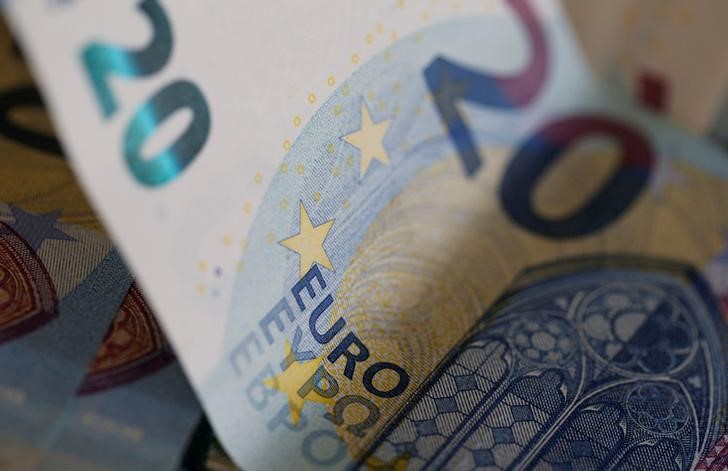By Abhinav Ramnarayan
LONDON (Reuters) - Top-rated German bond yields fell to multi-week lows on Wednesday as concerns about the strength of a rescue plan for Italian banks pushed investors to the safety of government debt.
Germany's two-year bond yield briefly touched a fresh record low at minus 0.84 percent
The German finance ministry expressed concern on Wednesday about Italian plans to rescue the country's third biggest lender Monte dei Paschi di Siena (MI:BMPS), saying Rome must stick to European rules.
On Monday, the European Central Bank told the ailing Italian lender that its capital shortfall had risen to 8.8 billion euros ($9.2 billion) from the 5 billion euros indicated previously.
This raised questions about whether the 20 billion euros earmarked by the Italian government would be enough to cover the funding requirements of all the country's banks.
An Italian Treasury source told Reuters this week that the amount would be enough, but investors are still concerned, said DZ Bank strategist Andy Cossor.
"The latest news about the Italian banking system may well be pushing investors into the safe haven of the Bund market," he said.
"...The Italian government is putting aside 20 billion euros and there are question marks over whether this will be enough. The market would like to have some clarity."
Germany's 10-year bond yield fell to 0.18 percent, its lowest since Nov. 9, before edging back up to 0.20 percent by late trade.
"Also, good quality safe haven assets are usually in demand at the year end – investors want to close their books with some safe assets in them," said Cossor.
Italian bond yields also edged lower to 1.83 percent <IT10YT=TWEB>.
Standard & Poor's said on Wednesday it did not expect any immediate effect on Italy's sovereign rating following the government's decision to set up the 20 billion euro fund.
Highlighting the divergence between the U.S. and Europe, 10-year U.S. Treasury yields rose overnight to 2.56 percent after U.S. consumer confidence hit its highest level in more than 15 years in December.
The gap between benchmark German and U.S. yields hit a high of 237 bps on Wednesday. The spread has been increasing recently on the divergence between European and U.S. central bank policy and outlooks for growth and inflation.
For Reuters new Live Markets blog on European and UK stock markets see reuters://realtime/verb=Open/url=http://emea1.apps.cp.extranet.thomsonreuters.biz/cms/?pageId=livemarkets

($1 = 0.9578 euros)